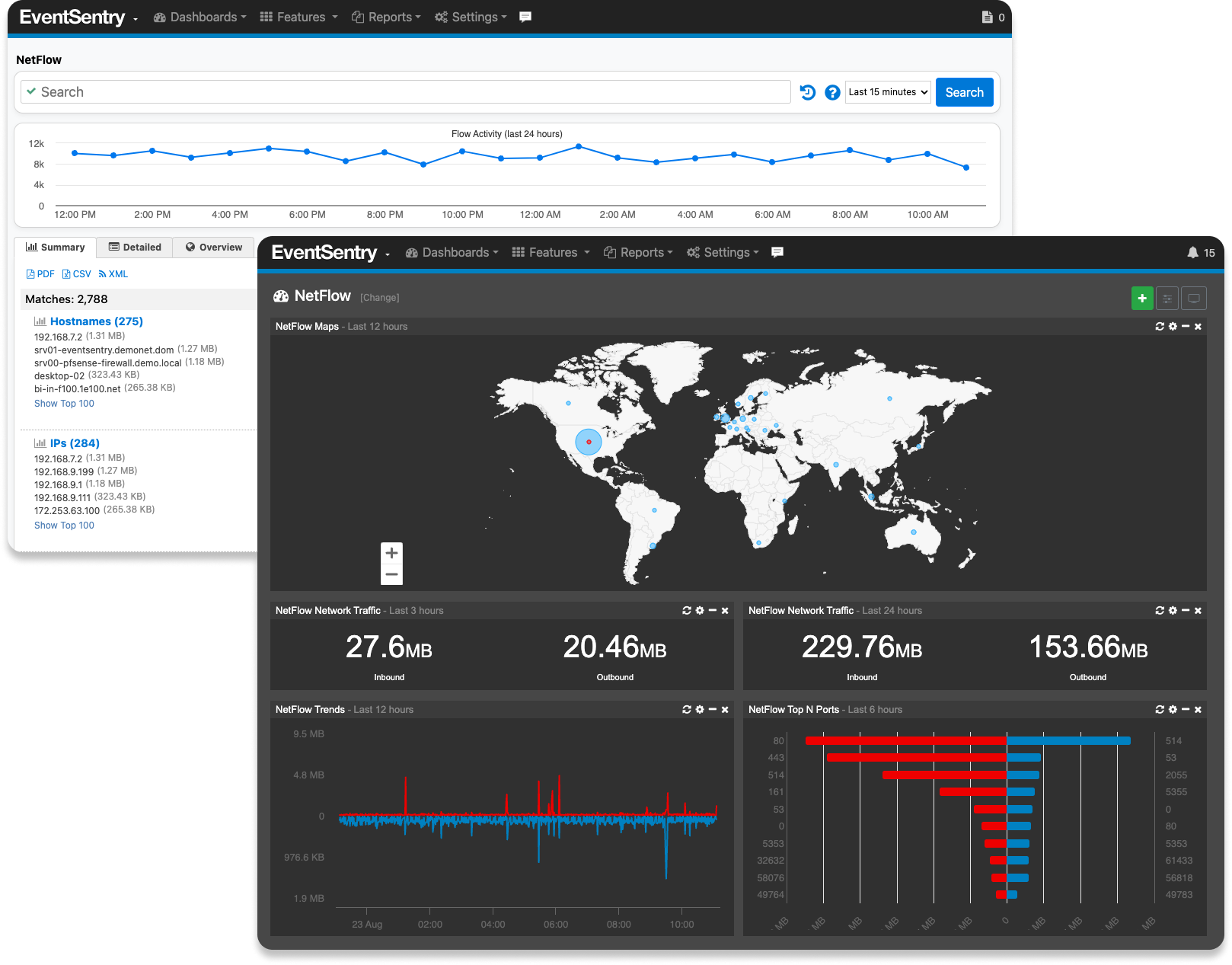Understanding Network Traffic with NetFlow
NetFlow is a powerful network protocol developed by Cisco Systems that collects and monitors network traffic data. It enables network administrators to gain deep insights into network performance, traffic patterns, and security threats. By analyzing NetFlow data, you can optimize network efficiency, detect anomalies, and ensure the smooth operation of your network infrastructure.
Why is NetFlow Important?
Understanding what’s happening on your network is now more crucial than ever. NetFlow provides:
Detailed Traffic Analysis
Gain visibility into who is using your network, what applications are consuming bandwidth, and where your traffic is going.
Enhanced Security Monitoring
Identify unusual traffic patterns that could indicate security threats such as DDoS attacks, malware, or unauthorized access.
Performance Optimization
Understand network usage trends, helping you to optimize bandwidth allocation and improve overall network performance.
Compliance and Reporting
Keep detailed logs of network activity for auditing purposes, ensuring you meet industry regulations and standards.
How Does NetFlow Work?
NetFlow works by capturing packet flows on your network. A "flow" is a conversation between two endpoints, defined by parameters such as IP addresses, port numbers, and protocol types. NetFlow-enabled devices like routers and switches record these flow details and export the data to a NetFlow collector, where it is processed and analyzed.
Flow Exporting
Capture and export network flow data from routers, switches, and other devices.
Real-Time Monitoring
Monitor network traffic in real-time to respond quickly to issues.
Historical Data
Store flow records for historical analysis, helping you identify trends and plan for future network needs.
Scalability
NetFlow scales with your network, handling large volumes of data without compromising performance.
| Version | |
|---|---|
| v1 | First implementation, now obsolete, and restricted to IPv4 (without IP mask and AS Numbers). |
| v2 | Cisco internal version, never released. |
| v3 | Cisco internal version, never released. |
| v4 | Cisco internal version, never released. |
| v5 | Most common version, available (as of 2009) on many routers from different brands, but restricted to IPv4 flows. |
| v6 | No longer supported by Cisco. |
| v7 | Like version 5 with a source router field. Used (only?) on Cisco Catalyst switches. |
| v8 | Several aggregation form, but only for information that is already present in version 5 records |
| v9 | Template Based, available (as of 2009) on some recent routers. Mostly used to report flows like IPv6, MPLS, or even plain IPv4 with BGP nexthop. |
| v10 | Used for identifying IPFIX. Although IPFIX is heavily based on NetFlow, v10 does not have anything to do with NetFlow. |
Monitoring NetFlow with EventSentry
By leveraging EventSentry's monitoring capabilities, you will gain real-time insights into network traffic patterns and anomalies, enabling proactive troubleshooting and optimization. Additionally, EventSentry can also facilitate compliance monitoring, helping organizations meet regulatory requirements by tracking NetFlow data for auditing and reporting purposes.
